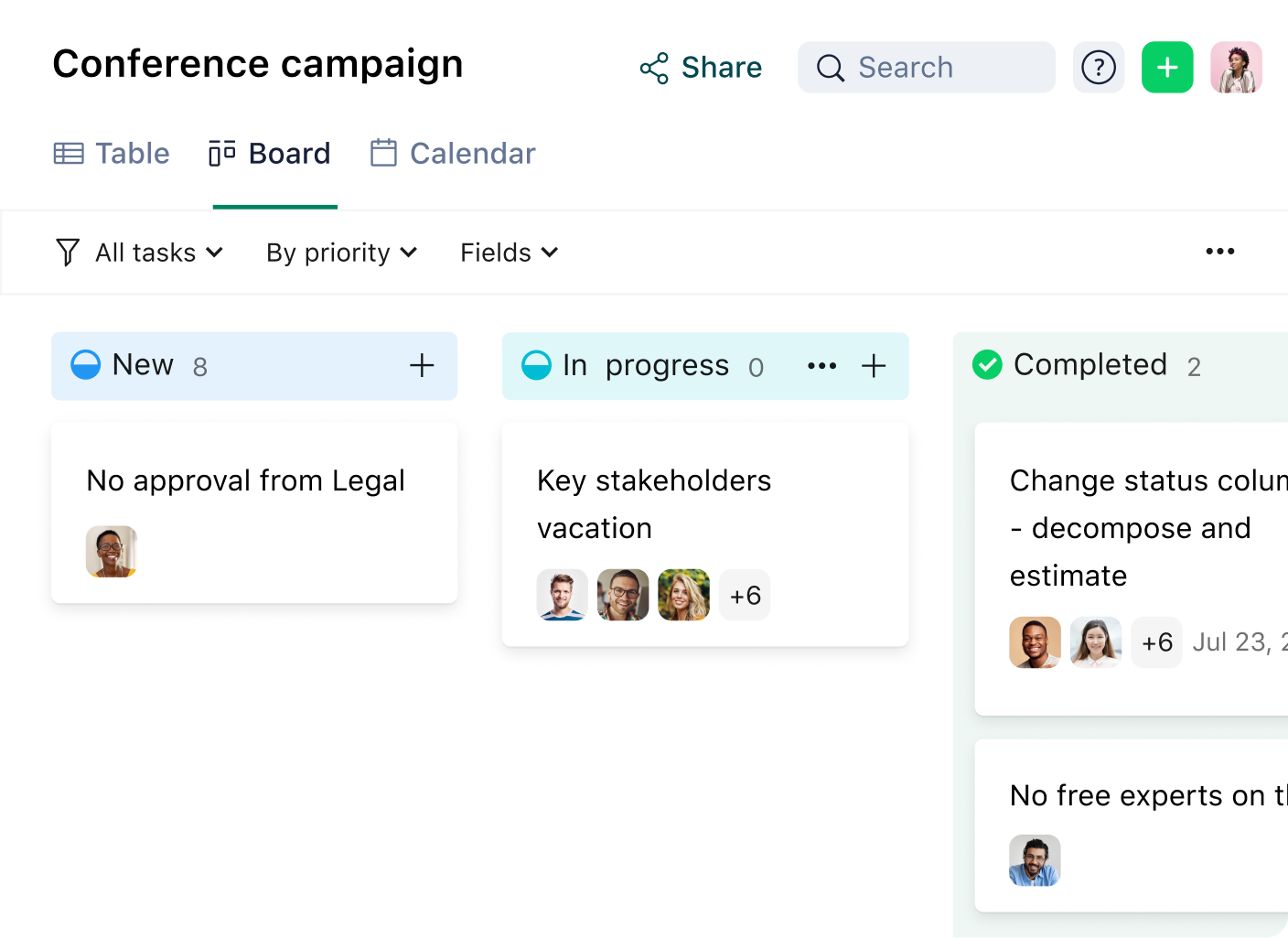What Is a Stakeholder in Project Management?
Stakeholders in project management are individuals, teams, or organizations with a vested interest and influence in the project’s success. They will be affected by your project at any point in its lifecycle, and their input can directly impact the outcome.
It’s essential to practice good stakeholder management and continuously communicate to collaborate on the project.
In this article, we’ll talk about typical stakeholders for any kind of project and how to identify them.
If you’re looking for a project management platform that will help you manage all of your projects in one place and streamline communication with your stakeholders, you can start a free trial today with Wrike.

How do you engage the right stakeholders for your project? Let’s look at the different types of stakeholders.
Stakeholders vs. key project stakeholders
Project stakeholders, in general, can be single individuals or entire organizations who are affected by the execution or outcome of a project. It doesn’t matter whether the project affects them negatively or positively — if they’re affected, they’re a stakeholder.
Key project stakeholders, however, are stakeholders who have the influence and authority to dictate whether a project is considered a success or not. These are the people and groups whose objectives must be satisfied, as they have the power to make or break the project.
Even if all deliverables are in and budgets are met, if the key stakeholders aren’t happy, the project cannot be considered a success.
Execute projects seamlessly and keep stakeholders connected
Examples of stakeholders
Here are some examples of non-key stakeholders:
- Shareholders of the company carrying out the project
- Non-governmental organizations (NGOs) concerned with the project’s impact
- Unions representing workers involved in the project
- Local communities impacted by the project’s execution or outcome
- Media outlets reporting on the project’s development
Examples of key stakeholders
On the other hand, here are the typical key stakeholders you’ll find in a project:
- Customers: The direct user of a product or service, often both internal and external to the company executing the project
- Project manager: The project’s leader, responsible for overseeing the entire project, managing tasks, and ensuring the team meets deadlines
- Project team members: The group executing the project under the project manager‘s leadership
- Project sponsor: The project’s financier
- Steering committee: An advisory group providing guidance on key decisions, which includes the sponsor, executives, and key stakeholders from the organization
- Executives: The top management in the company executing the project; those who direct the organization’s strategy
- Resource managers: Other managers who control resources needed for executing the project
This visual shows how you can track tasks and manage stakeholders using Wrike’s custom views.


Internal vs. external stakeholders in project management
Stakeholders can be divided into two main categories: internal and external. Your project may have key stakeholders both inside and outside of your organization. That’s why it’s worth noting the key differences between internal and external stakeholders.
Internal stakeholders
Internal stakeholders are those within your organization. They can include top management, project team members, your own manager, your peers or coworkers, a resource manager, and internal customers.
External stakeholders
External stakeholders are not part of your organization but might include external customers, government entities, contractors, and subcontractors, as well as suppliers.
Identifying stakeholders for a project
Identifying internal and external stakeholders in project management will allow you to better execute your project planning by ensuring each and every stakeholder is informed throughout the project and satisfied with the end result.
Stakeholder project management plays an important role in this process, as it focuses on identifying, managing, and engaging all parties who influence or are affected by the project.
To ensure you include all relevant internal and external stakeholders, you’ll want to learn how to create a stakeholder management plan with our helpful guide.
Bring all your stakeholders together with Wrike
Now that you’ve identified your project management stakeholders, it’s important to keep them informed throughout your project’s lifecycle. Wrike is the ideal platform to bring all your stakeholders together and facilitate close collaboration with them.
With an intuitive interface, task management features, and real-time communication, Wrike makes it easy for team members to stay on the same page and work together toward a common goal.
With Wrike’s mobile app, stakeholders can access project information from anywhere, ensuring they don’t miss out on important updates.
Overall, Wrike’s project management collaboration tools help teams to work efficiently and effectively, delivering successful project outcomes on time, every time.
Further reading:
- 4 Strategies for Dealing With Difficult Stakeholders
- 7 Keys to Project Stakeholder Management from the #PMChat Community
- Project Management Lessons Learned from the Apollo 11 Moon Landing
- 4 Skills Managers Will Need to Learn in the Next Decade
- Why Every Company Needs a Culture of Collaboration
- What Can We Learn from Project Failure? 5 Lessons from Project Management Experts

Artem Gurnov
Artem is a Director of Account Development at Wrike. He previously held the role of Project Manager, overseeing a team of customer success managers (CSMs). Over the years of building teams and scaling business processes, he has successfully deployed multiple projects, from automating client outreach to setting up work prioritization tools for sales reps and CSMs.


